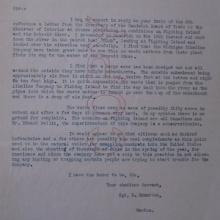Government

Short Teaching Module: Shared Space, Shared Experiences: Transnational Water Management around the Great Lakes
World historians sometimes work within a single sub-field, such as migration history or gender history, but they can also bring sub-fields together, as their perspectives, methods, and subject matter cross boundaries.

Primer: The History of Globalization
Globalization, defined here as the integration of an interdependent economy that simultaneously enhances cultural exchanges relying on the mobility of people, animals, plants, pathogens, objects, and ideas, is a useful concept for exploring connections across space and time.

Long Teaching Module: Masculinity and Femininity in the Mongol Empire
This module examines ideals of masculinity and femininity among the Mongols, the Central Asian nomadic pastoralists who in the thirteenth century under their leader Chinggis Khan created the largest land-based empire the world has ever seen.

Sorghaghtani Beki and Tolui
In this illustration from Rashid al-Din’s Compendium of Chronicles Sorghaghtani Beki and Tolui sit together on a pillowed throne.

Sorghaghtani Beki in the eyes of court historians
Sorghaghtani Beki, the wife and then widow of Chinggis Khan’s youngest son Tolui, appears in many contemporary written sources about the Mongol Empire, and is always viewed positively.

Frontispiece of Sir Thomas Roe
This image is the frontispiece of Sir Thomas Roe (ca. 1581-1644) from the book The Negotiations of Sir T. Roe in his Embassy to the Ottoman Porte from the year 1621 to 1628, a collection of his correspondence during his time as the English ambassador to the Ottoman Empire.

Analyzing Newspapers
A newspaper is a publication intended for a broad audience that appears regularly, often daily, and claims to contain factual accounts of recent events. Usually newspapers are published with the intention of making a profit.